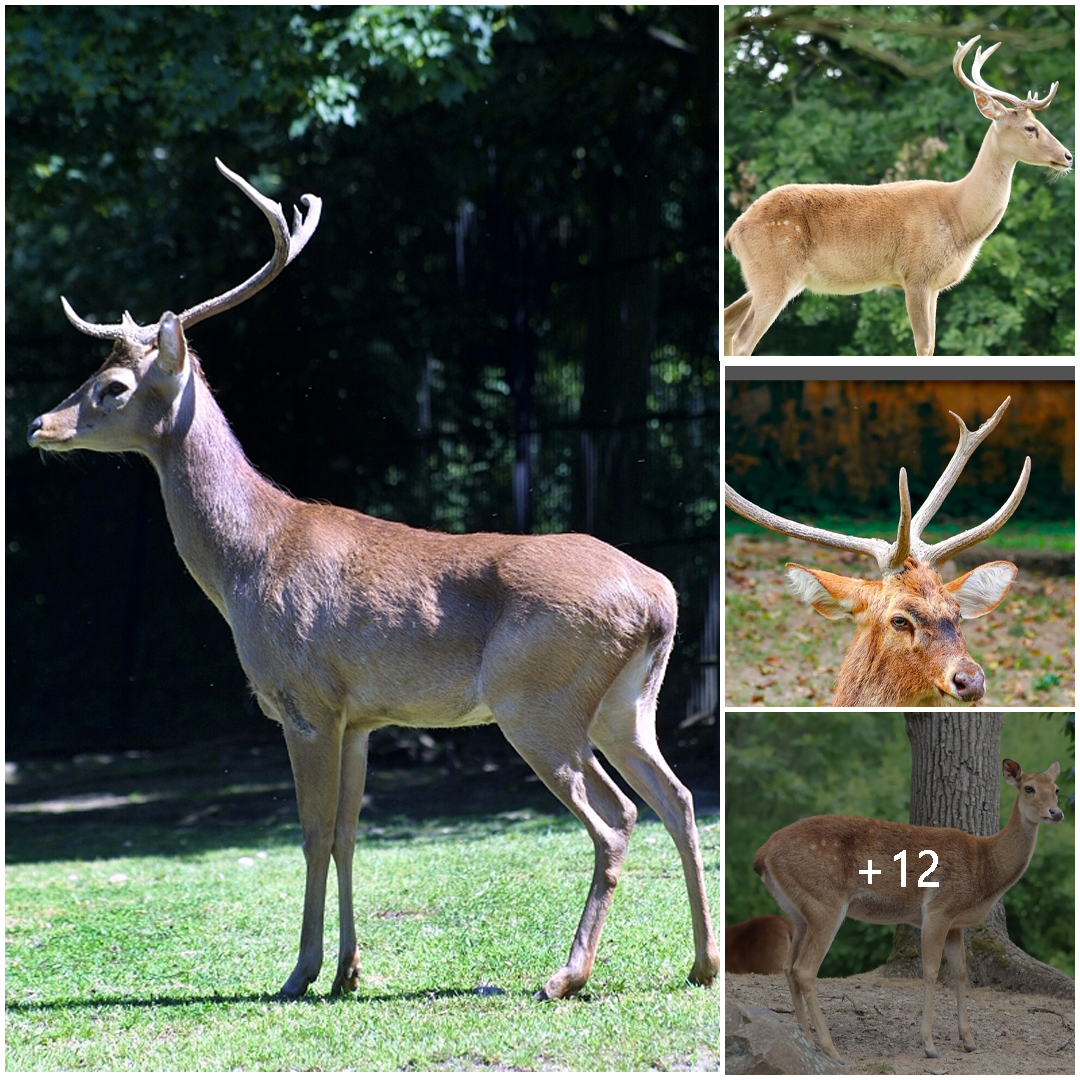
Exploring the Eld’s Deer: A Majestic Symbol of Conservation Efforts
The Eld’s Deer, also known as the Thamin or Brow-antlered Deer (Rucervus eldii), stands as a majestic and iconic species that inhabits the dense forests and grasslands of Southeast Asia. With its distinctive brow-antlers and elegant demeanor, the Eld’s Deer holds a special place in the hearts of wildlife enthusiasts and conservationists alike. In this article, we delve into the fascinating world of the Eld’s Deer, shedding light on its characteristics, habitat, conservation status, and the efforts being made to protect this remarkable species.
Appearance and Characteristics: The Eld’s Deer is renowned for its striking appearance, characterized by its large, branching brow-antlers, which are adorned with multiple tines. These antlers are most prominent in males and serve as a display of dominance during the mating season. The deer’s coat varies in color from reddish-brown to grayish-brown, with a lighter underside and distinct white markings on the throat and belly. Adult males are larger and heavier than females, with a robust build and muscular stature.
Habitat and Distribution: Historically, the Eld’s Deer inhabited a vast range across Southeast Asia, including parts of Myanmar, Thailand, Laos, Vietnam, and Cambodia. However, due to habitat loss, hunting pressure, and human encroachment, the species has experienced significant population declines and range contraction in recent decades. Today, the Eld’s Deer is primarily confined to protected areas and wildlife reserves, where conservation efforts are underway to safeguard its remaining populations.
Behavior and Ecology: Eld’s Deer are predominantly crepuscular and nocturnal animals, meaning they are most active during the dawn and dusk hours. They inhabit a variety of habitats, including grasslands, marshes, and open woodlands, where they feed on a diverse diet of grasses, herbs, leaves, and aquatic vegetation. During the breeding season, males engage in fierce battles for dominance and mating rights, using their antlers to intimidate rivals and assert their dominance.
Conservation Status: The Eld’s Deer is currently listed as Endangered on the International Union for Conservation of Nature (IUCN) Red List of Threatened Species, with populations facing ongoing threats from habitat loss, poaching, and illegal hunting. Conservation efforts aimed at protecting the Eld’s Deer include habitat restoration, anti-poaching patrols, community-based conservation initiatives, and captive breeding programs. These efforts are crucial for ensuring the survival of this iconic species and preserving its genetic diversity for future generations.
Conclusion: The Eld’s Deer serves as a poignant symbol of the challenges and opportunities associated with wildlife conservation in Southeast Asia. With its majestic beauty, ecological significance, and cultural importance, this iconic species embodies the need for concerted efforts to protect and preserve our planet’s biodiversity. By raising awareness, supporting conservation initiatives, and advocating for sustainable land management practices, we can ensure that the Eld’s Deer continues to thrive in the wild for generations to come.





